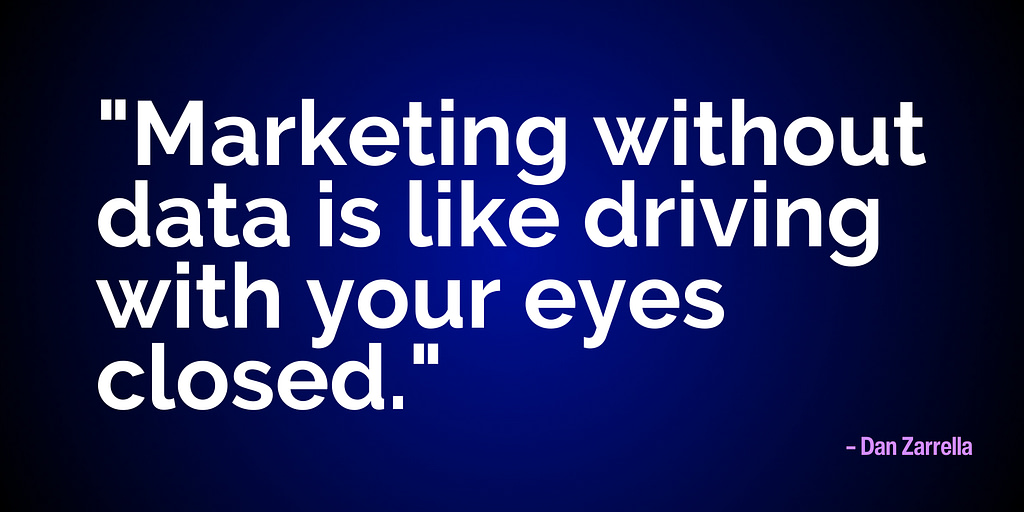Table of Contents
1) The Power of Social Media for Small Businesses
2) The Need for Data-Driven Decision Making
3) Understanding Social Media Analytics
4) Setting Up for Success
5) Key Metrics to Track
6) Analyzing Content Performance
7) Measuring ROI and Conversions
8) Adapting Your Strategy Based on Insights
9) Reporting and Presentation
10) Staying Updated and Relevant
In today’s digital landscape, social media isn’t just a place for sharing cute cat videos and vacation photos – it’s a goldmine of data that can supercharge your marketing efforts. I’m here to show you how to dive into the world of social media analytics and turn those numbers into actionable insights that will take your business to the next level.
1. The Power of Social Media for Small Businesses
It’s easy to think that marketing your business on social media is just about posting pretty pictures and witty captions. I’m here to tell you that behind those likes and comments lies a treasure trove of information that could skyrocket your sales. Social media isn’t just a place to connect with customers; it’s a playground for understanding their behaviours and preferences.
2. The Need for Data-Driven Decision Making
Remember the time you spent hours creating that viral-worthy post, only to find out it barely moved the needle? We’ve all been there. This is where data-driven decision-making comes into play. Instead of relying on gut feelings and guesswork, analyzing data lets you tailor your content to what your audience actually wants.
3. Understanding Social Media Analytics
3.1 Defining Social Media Analytics
Social media analytics is like peeking into your customers’ minds, but instead of psychic powers, you use data. It’s about tracking metrics – numbers that reveal how well your social media efforts are paying off.
3.2 The Types of Data You Can Collect
From likes and shares to click-through rates and conversion numbers, you can gather a variety of data points. Each metric tells a different part of the story. Likes and shares show engagement, while click-through rates highlight the effectiveness of your call-to-action, e.g., “Buy Now,” “Subscribe Today,” or “Get a Free Quote.”
3.3 Importance of Metrics: Vanity Metrics vs. Actionable Metrics
Early on, I got caught up in vanity metrics like the number of followers. But having a million followers means zilch if they’re not interacting with your content. Focus on actionable metrics that drive real results – like the number of people who clicked through to your website or made a purchase.
4. Setting Up for Success
4.1 Choosing the Right Social Media Platforms
As a cupcake bakery owner, you might find Instagram more useful than LinkedIn. On the flipside, if you own an event management company your main platform focus should be LinkedIn. Different platforms attract different audiences, so choose wisely.
4.2 Implementing Social Media Tracking Tools
Tools like Google Analytics and social media analytics built into platforms help you collect and interpret data. When I started, I found Facebook Insights incredibly useful – it showed me which posts resonated most with my audience. Now I use Metricool to schedule all of my content, and from their dashboard, I’m able to see the overall impact of my posts, as well as a breakdown for each platform.
4.3 Defining Clear Marketing Goals
Think of your goals as the GPS guiding your social media journey. Whether it’s boosting sales, increasing website traffic, or building brand awareness, clear goals not only help you create the content itself but also measure its success.
5. Key Metrics to Track
5.1 Engagement Metrics (Likes, Comments, Shares)
Think of how you behave on social media – if you come across a video that brought you joy or taught you something useful, you’ll probably give it a like and share it with someone to brighten their day or teach them something new. If you’re feeling particularly social, you may even leave a comment on a post you enjoyed for further clarification or to simply support that creator. This is exactly how you want your audience to react to your business’ content. Engagement metrics tell you what content your customers love.
5.2 Reach and Impressions: Understanding Your Audience Reach
Impressions tell you how many times your content appeared on screens. Reach shows you how many unique eyes saw it. Understanding these metrics helps you gauge the visibility of your posts. Reach and impressions go hand in hand with engagement because social media algorithms will often show your content to more people if it receives a lot of engagement. TikTok is known for this because it’s possible to go viral with little to no followers.
5.3 Click-Through Rates (CTR) and Conversion Rates
CTR tells you how often people click on your links or ads, indicating interest. Conversion rates, on the other hand, reveal the percentage of those clicks that led to a desired action, like a purchase or sign-up. These numbers not only help with your social media content but also with your website design. If you have a high click-through rate but a low conversion rate, there may be something on your website turning off potential customers.
5.4 Follower Growth and Audience Demographics
Follower count isn’t everything, but a growing audience is a good sign. Dig deeper by exploring the demographics of your followers – age, gender, location – to tailor your content better. It can be extremely helpful to create a “Buyer Persona” based on your target audience and think of their needs and preferences when creating content.
6. Analyzing Content Performance
6.1 Identifying Top-Performing Content
Take a look at which of your posts performed the best in the last six months – do they have a similar topic or aesthetic? Use this valuable data to replicate success in your future posts!
6.2 Content A/B Testing: What, Why, and How
A/B testing involves trying two versions of the same content to see which performs better. I once tested two different ad headlines and was amazed at how much a small tweak could boost click-through rates.
6.3 Utilizing UTM Parameters for Link Tracking
Imagine UTM parameters as digital breadcrumbs that play a crucial role in tracking the origins of your website visitors. They act like little markers that show you the exact path people took to land on your website. This information becomes incredibly important because it helps you figure out which social media posts are the real champions when it comes to getting people to click on your links.
7. Measuring ROI and Conversions
7.1 Setting Up Conversion Tracking
Imagine the satisfaction of knowing that your latest tweet led to five online sales. Conversion tracking is the process of connecting your social media activities with real-world results, like sales or sign-ups, using tools like Google Analytics. By generating unique tracking codes and placing them on specific web pages, you can trace the journey of users from social media to your website, pinpointing which platforms and posts are driving the most conversions.
7.2 Calculating Return on Investment (ROI)
ROI is the ultimate measure of success. By comparing the cost of your social media efforts to the revenue they generated, you can determine whether your strategy is worth the investment.
7.3 Attribution Models: Which Channels Drive Conversions
Sometimes, a customer interacts with multiple touchpoints before making a purchase. Attribution models help you figure out which social media channels played a crucial role in the buying journey.
8. Adapting Your Strategy Based on Insights
8.1 Identifying Trends and Patterns
Analyzing historical data helps you spot trends – like which months your sales peak or when your engagement drops. These insights allow you to plan strategically.
8.2 Making Informed Content Decisions
Should you post more video content or dive into Instagram Stories? Let data guide these decisions, and you’ll see better engagement.
9. Reporting and Presentation
9.1 Creating Comprehensive yet Digestible Reports
No need for a 50-page report. Summarize your findings in a way that’s easy to understand, even for someone who’s not a data whiz. This will not only be useful at the time but in the future as well to better understand the highs and lows of your business throughout the year.
9.2 Sharing Insights with Stakeholders
When you present data-backed insights to your team, you’ll have a much easier time getting everyone on board with your approach. Transparency builds trust and collaboration.
9.3 Iterative Approach: Refining Your Strategy Over Time
The digital landscape is always evolving. Your strategy should be too. Regularly review your data, adjust your tactics, and keep pushing forward.
10. Staying Updated and Relevant
10.1 Keeping Abreast of Platform Changes
Social media platforms love to keep us on our toes with updates and algorithm changes. Stay informed to adapt your strategy accordingly.
10.2 Embracing New Analytics Tools and Techniques
Don’t get stuck in your ways. Explore new tools and techniques that can provide deeper insights into your audience’s behaviours.
10.3 Continuous Learning and Skill Development
Becoming a data-driven marketer is a journey, not a destination. Keep learning about analytics, marketing trends, and customer behaviours to stay ahead.

You’re now armed with the basics of social media analytics. From engagement metrics to ROI calculations, these insights are your compass to navigate the vast social media sea. Remember, it’s not about drowning in data – it’s about using it to shape your strategies, connect with your audience, and drive meaningful results. Get ready to see your business thrive with the power of data-driven marketing!

